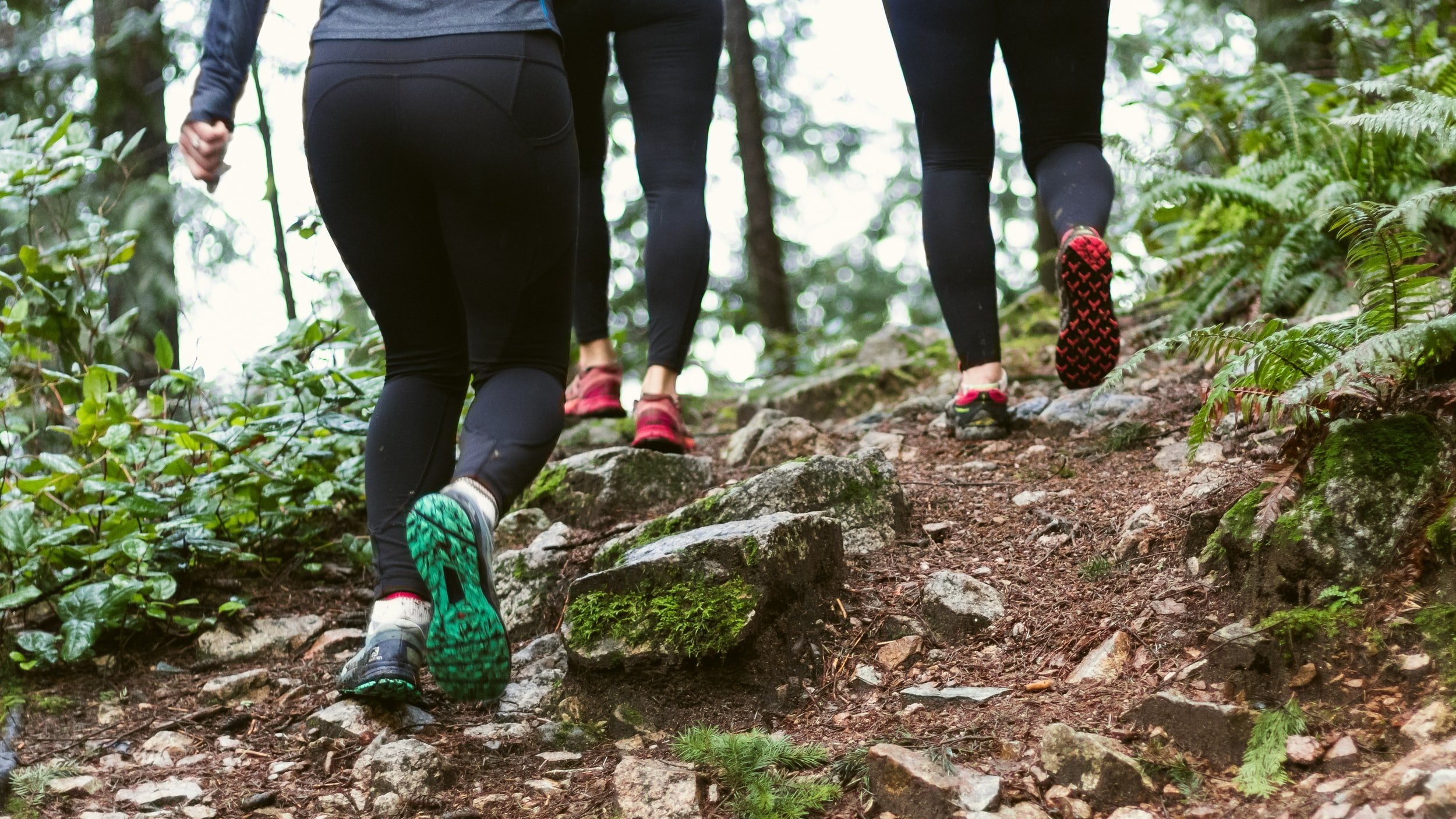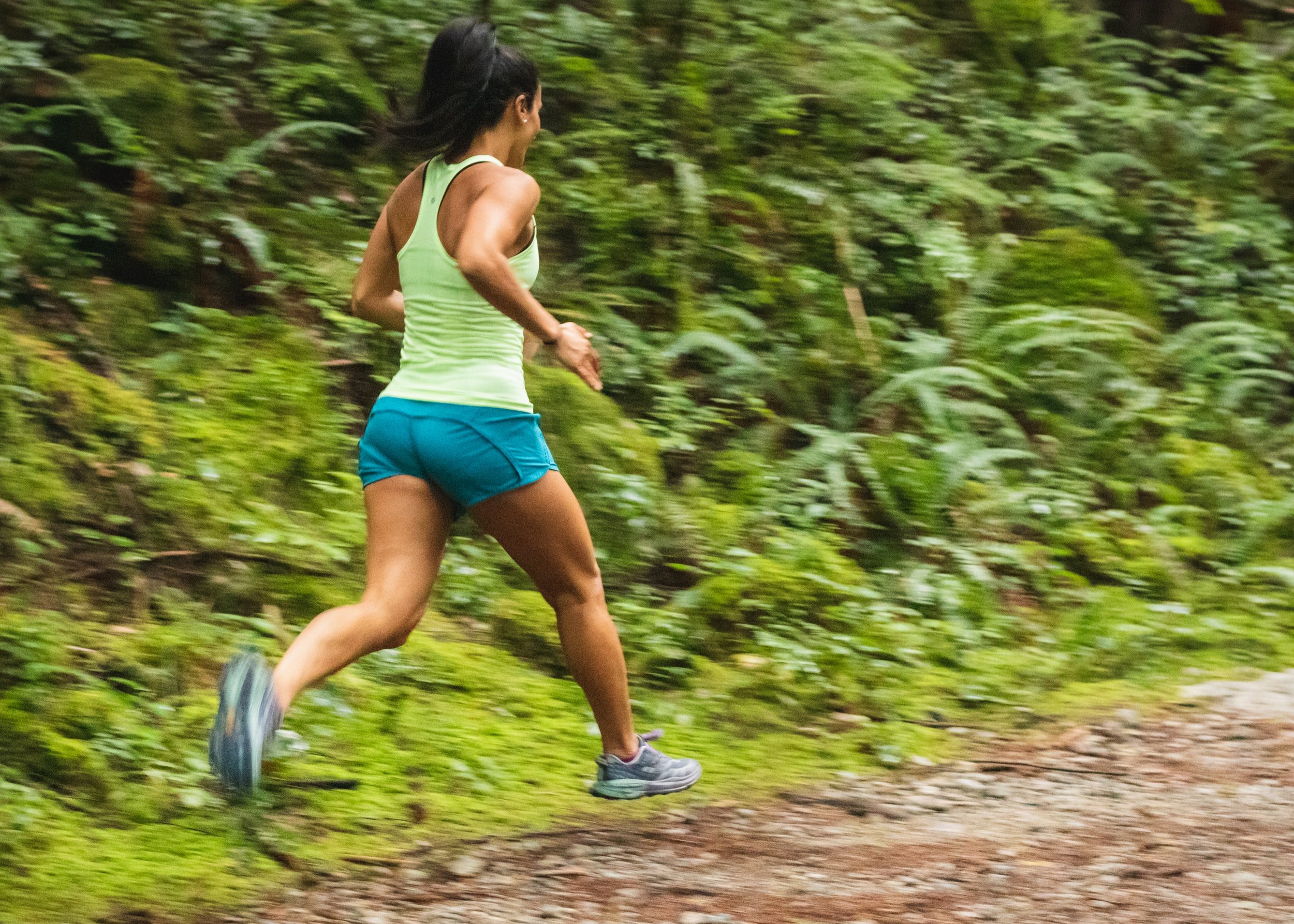A Roadrunners Guide To Trail Running, Part 4
Gnarly
Rolling
Vert
Groomed
Baby heads
Scree
Single track
Glissade
Roots
Muddy
These are all terms used to describe trails by trail runners. The aspect that most separates trail running from road running is the terrain underfoot. The experience of running on rocky, root filled, dirty, muddy, slick and otherwise uneven ground is what attracts most of us to the sport. It’s different than the simple act of road running with its smooth flow. In trail running, you have to focus on each step. For even the most experienced trail runners, this takes a significant portion of ones mental capacity. It is this single mindedness that I find is a welcome distraction to the outside noise that is always trying to get in my head.
While there is no substitute for time on the trails to improve your trail running skills, there are some tricks you can implement to get a good head start.
PICK UP YOUR TOES
This one sounds so obvious that you would think we would all just do it. However, I can confidently say that 99% of my falls have started with a stubbed toe. It just happens in the blink of an eye and the next thing you know you are hoping that you can get your feet back under the weight of your body before it’s too late.
In my experience the stubbed toe happens either when I am tired or going fast. When I’m tired it is just because my form gets bad. The good news is that those falls are usually pretty tame with a scraped hand and maybe a bloody knee. Avoiding these falls just requires focus and experience. It’s like when you start driving a car. You are hyper focused all the time and it’s exhausting. With experience muscle memory develops and what used to be a major frontal lobe tasks becomes routine.
For the stubbed toes that happen when I a moving fast, they are almost always a lack of concentration. Rocks and roots are coming at you quickly, and your oxygen deprived brain is calculating faster than the fastest super computer. One split second of distraction means that you miscalculate the height of a rock or you dismiss a root as a shadow. You can only see these things after you’ve hit the ground and look back, and there it is as plain as day! Some people may say that the trick to avoiding these falls is slowing down. That is also a way to shrivel up and die! Instead, I recommend that you run fast in shorter spurts. Once you feel that you can’t keep up with how fast the trail is coming at you, take a walk break. Stop for a picture of a friend behind you. Yield to an uphill hiker way before they get to you. These breaks allow blood to get back to both your muscles and your brain, and your confidence will build with the successes. And if you do wipe out, know that you are part of well established club called Trail Runners.
GET TO KNOW THE ROCKS
While running in the Himalaya in 2014, I had the opportunity to run downhill with some elite local runners . Well, ok, I ran with them for a few minutes before they disappeared down the mountain! The thing that amazed me was how they seemed to float from rock to rock where as every rock I landed on moved or rolled. The discovery was that it wasn’t that they were that much agile than I (although they were!). It was their inherent knowledge of which rocks were solid. From years of experience, they knew they could land with all of their weight on a rock, and it wouldn’t move. And if it did they had a good idea of which direction it would go.
Through the years of trail running, I have learned a few things about rocks. The baby heads are the worst! These are rocks that are about the size of baby’s heads, and they are round. Since they are round, they don’t have anything buried under the ground and will move with even the least bit of force. Alternatively, a rock that is fairly pointy probably has some mass underground that will make it stable for landing. You’ve got to be able to control your body on a small footing, but the rock is not going to be a variable in your step.
The other thing I’ve learned is that big slab type rocks are not going to move, but they may be slick. The trick is to take what they give and don’t ask for more. What I mean is to expect a solid surface underfoot, but don’t ask for friction. This means don’t try to change directions or slow down a descent on a big slab of rock. Instead go with the direction of your momentum and put off your redirect or slow down for a step or two ahead.
NOT ALL FALLS ARE CREATED EQUALLY
Now that you are a pro at keeping your toes up and reading the rocks, you can move quickly and comfortably, but you’re still gonna fall. If you have never fallen, please send me a note. I want to send you a prize.
The truth though is that all falls are not created equally. By this I mean that there are places where a fall is no big deal. For example running on a flat single track that has grass on either side, you just take the exit ramp into the soft grass for a tumble. Running uphill, even on mild grades, you are going to have a much better chance of getting your feet back under you if you stumble. The places you want to be more conservative are when there are drop offs and no soft places to land. In these situations, you are going to have to fall in the trail which may not be a fun place to take a spill. In these circumstances, you may need to pull back from what is your typical speed and tell yourself that you will save it for a better section up ahead.
About the Author:
Dave Smithey is the owner and a guide for Top Out Adventures. His passion for the outdoors and people comes from his experiences as an ultra runner and mountaineer. You can contact him at DaveS@TopOutAdventures.com.





